Join our community to see how developers are using Workik AI everyday.
Supported AI models on Workik
GPT 5.2, GPT 5.1 Codex, GPT 5.1, GPT 5 Mini, GPT 5, GPT 4.1 Mini
Gemini 3 Flash, Gemini 3 Pro, Gemini 2.5 Pro, Gemini 2.5 Flash
Claude 4.5 Sonnet, Claude 4.5 Haiku, Claude 4 Sonnet, Claude 3.5 Haiku
Deepseek Reasoner, Deepseek Chat, Deepseek R1(High)
Grok 4.1 Fast, Grok 4, Grok Code Fast 1
Models availability might vary based on your plan on Workik
Features

Describe what you need. AI builds full sections, including headers, forms, modals, and layout scaffolds.

Add Tailwind, Bootstrap, or your own utility class rules — AI adapts HTML to match your stack and conventions.

AI applies mobile-first logic and modern grid systems to ensure your layouts work across screen sizes.

Save any generated block as a component in the context. AI recalls and adapts it for new prompts.
How it works
Sign up using google account or manually register in minutes to access AI assistance for free.
Specify frameworks like Tailwind or Bootstrap, paste in design specs, or upload sample code or image. AI uses this to align output with your setup.
Receive clean, responsive HTML instantly. Use natural language or technical prompts to tell the AI what to build—like “responsive pricing section with three cards.”
Invite your team to the workspace. Make changes, save reusable components, or regenerate with updated inputs.
supercharge development
Try For Free

FEATURES

Convert Figma designs into responsive, semantic HTML in minutes

Build markup that aligns with BEM, utility-first, or component-based architecture

Maintain W3C-compliant, SEO-friendly, and accessible HTML without extra tooling

Export production-ready code directly into IDEs, design systems, or CI/CD pipelines

Reuse components efficiently with shared, context-aware workspace storage
Try For Free

FEATURES

Learn HTML structure faster with real-time guidance and clear tag breakdowns

Avoid broken tags, invalid nesting, and layout issues from the start

Generate complete sections like forms, headers, and CTAs with simple prompts

Focus on building, not syntax, through an intuitive, prompt-first experience

Gain confidence through helpful tips and structured, readable code examples
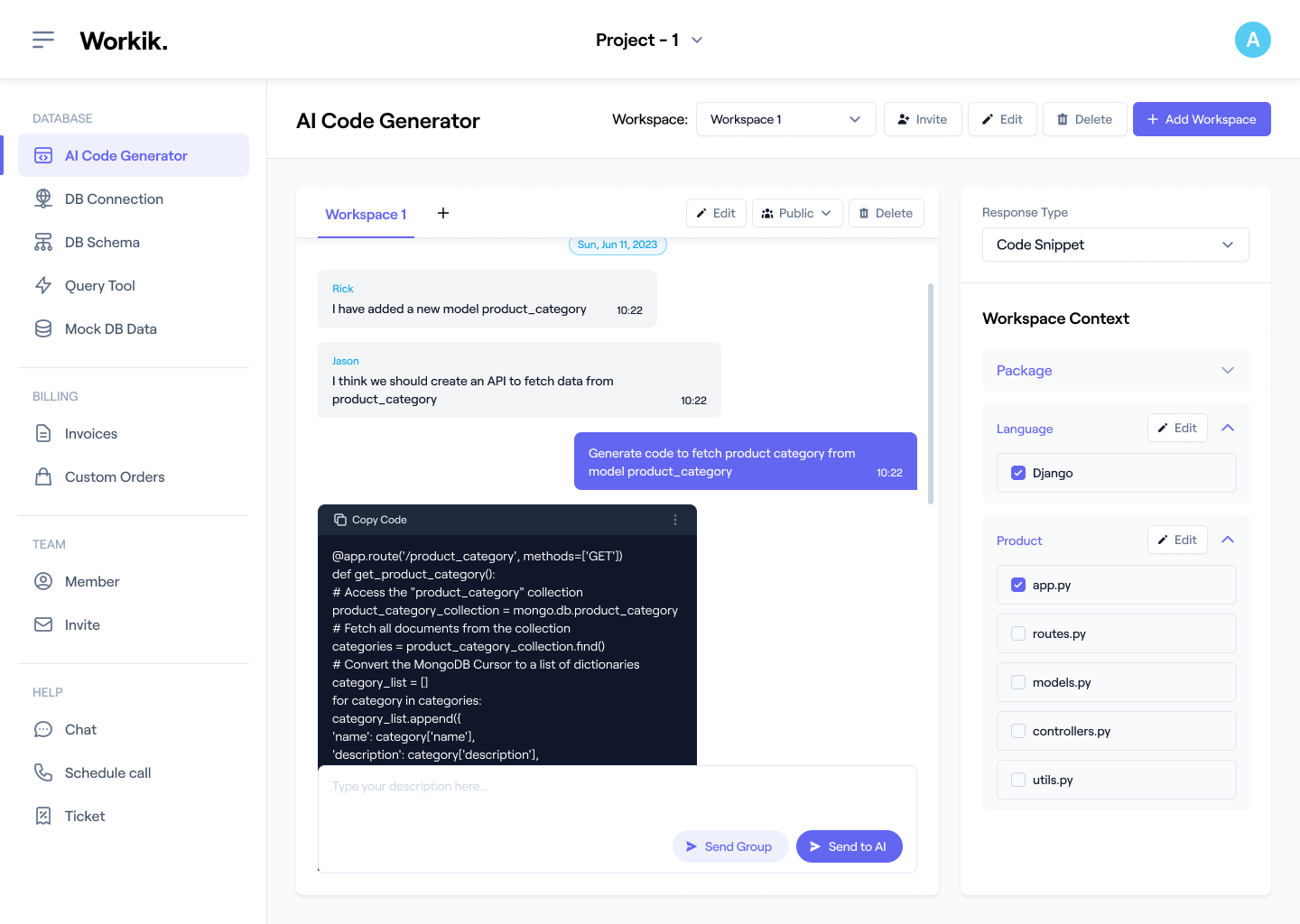

Expand
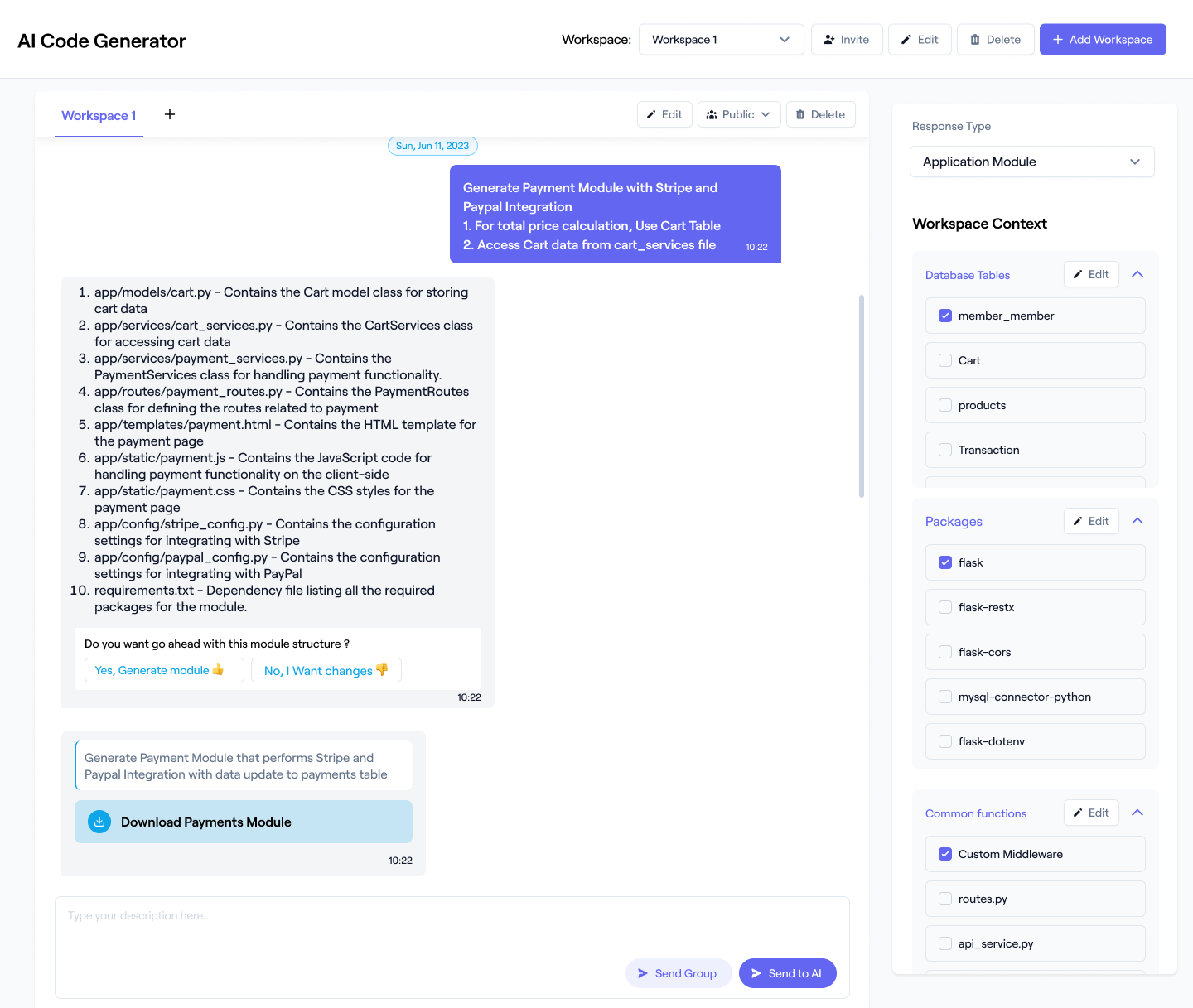

Expand
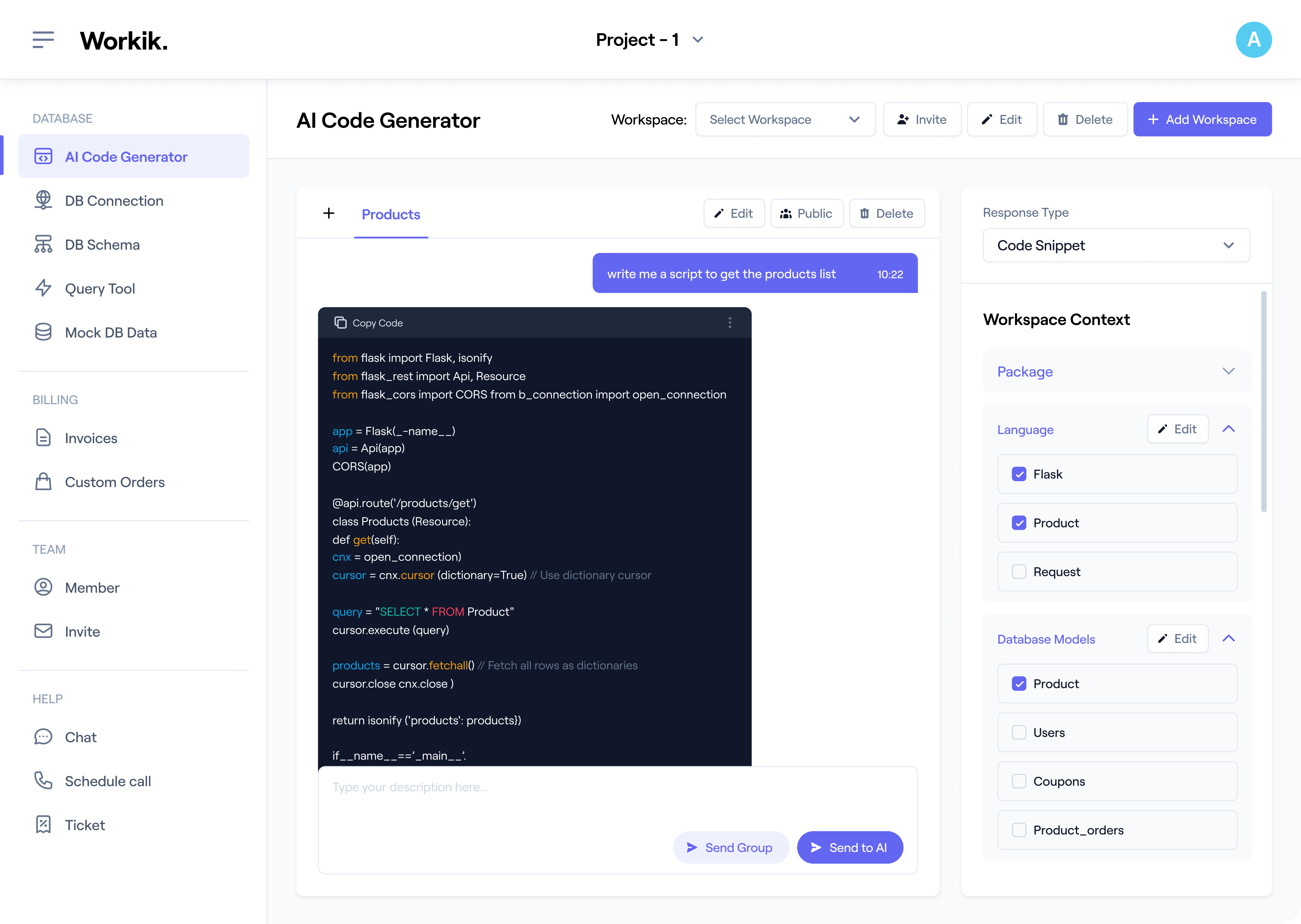

Expand
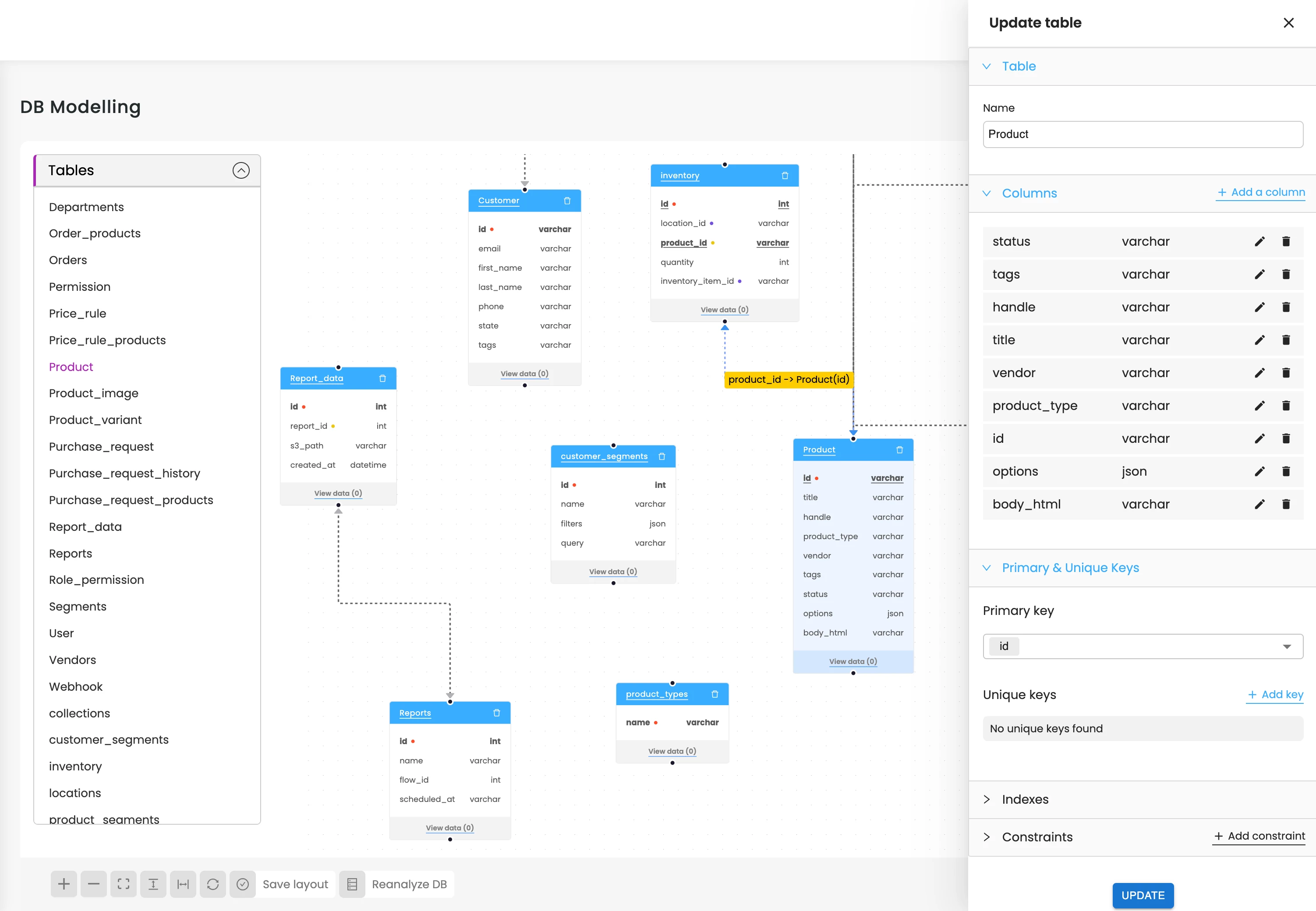

Expand
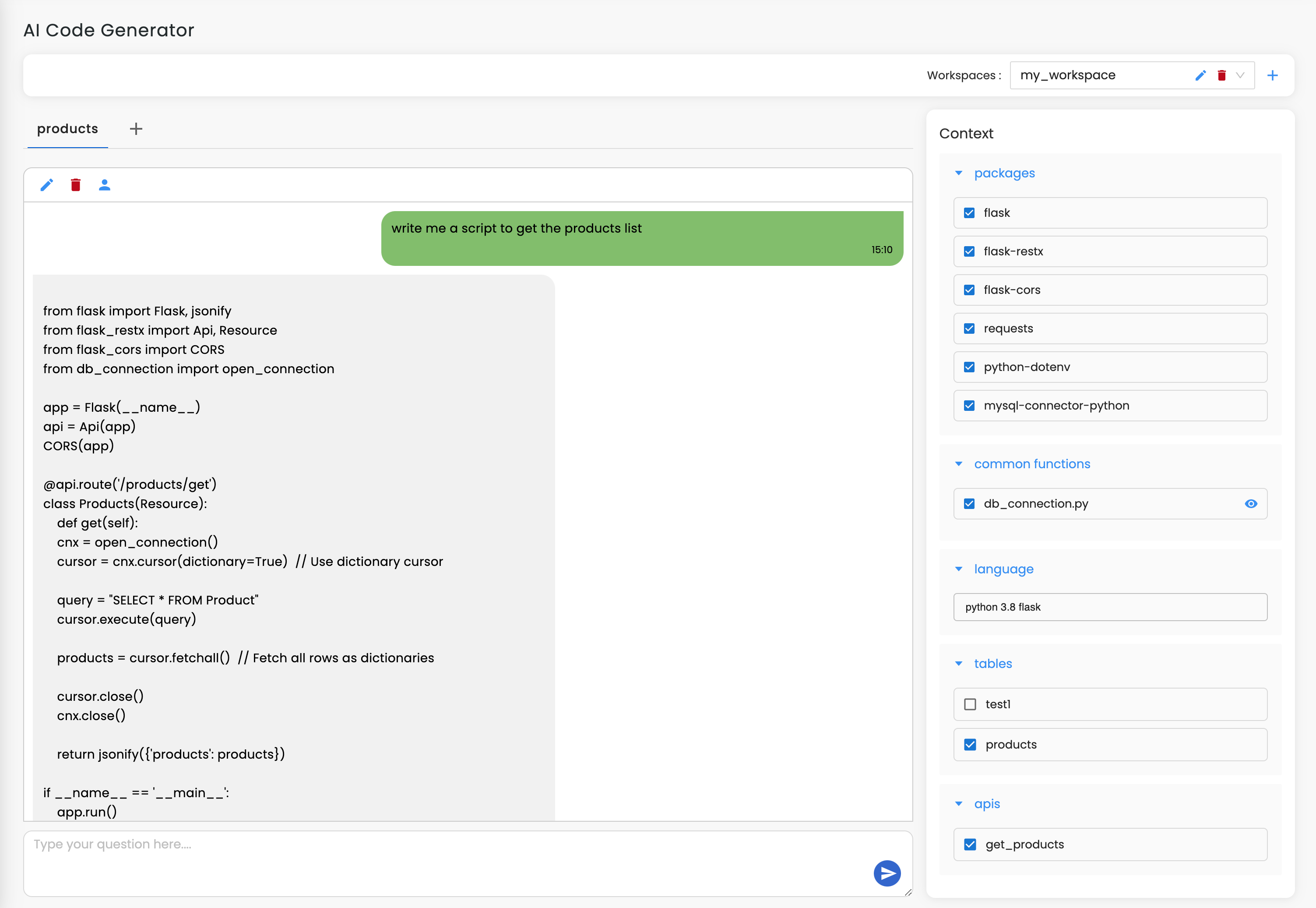

Expand


Expand


Expand


TESTIMONIALS
Real Stories, Real Results with Workik AI
The AI HTML Code Generator is a definite productivity booster — our sites are live faster than ever.

Jordan Miller
CTO
Workik AI has made learning HTML intuitive. It's like having a mentor that guides you.

Samantha Brooks
Frontend Developer
AI-driven approach to Bootstrap and React projects has transformed the way I work. My workflow is more streamlined.

Liam Smith
Senior Full-Stack Developer
What are some common use cases for Workik’s AI HTML Code Generator?


Developers use Workik AI to accelerate real-world HTML workflows. Here’s what AI can assist with:
* Generate landing pages with hero, features, testimonials, and CTAs
* Build responsive email templates with inline styles and clean tables
* Create multi-step forms with labels, validation, and accessibility tags
* Scaffold UI blocks like cards, dashboards, and sidebars for web apps
* Convert Figma screenshots into structured, responsive HTML
* Spin up blog layouts with headers, authors, and post grids
* Prototype full-page mockups for client feedback and iteration
* Reuse saved sections like pricing, forms, or testimonials across projects
* Generate framework-specific markup for Tailwind, Bootstrap, or custom CSS
* Fill wireframes or sketches with semantic, production-ready HTML
How does context-setting improve the HTML generation experience?


Context-setting helps AI generate HTML that aligns with your exact stack, style, and structure. Here’s how you can use it:
* Specify frameworks like Tailwind or Bootstrap for accurate class usage
* Define layout rules, naming conventions, or structural patterns
* Upload wireframes or screenshots to guide layout and content hierarchy
* Save generated blocks for consistent reuse across projects
* Add sample code to steer the AI’s output toward your existing codebase
* Share context in team workspaces to standardize frontend workflows
Can I generate HTML with specific design systems or frameworks?


Yes. You can set the context to match frameworks like Tailwind CSS, Bootstrap, or even your custom utility classes. The AI then adapts its output—for example, adding flex, gap, and grid utilities if you're working with Tailwind, or using row, col, and container classes in Bootstrap. It ensures the structure is compatible and extendable within your chosen system.
How does AI help with SEO and accessibility?


The HTML generated by AI includes proper semantic tags (
What happens if I want to reuse or modify code later?


You can save any HTML block you generate as a reusable component inside your context. This lets you regenerate it later, apply changes, or use it as a base for other components. For example, if you created a “3-step process block,” you can duplicate it and ask the AI to modify it for a “5-step version with icons.”
Can I use AI to speed up client work or freelance projects?


Absolutely. Whether you're mocking up UI in a client call or building landing pages for a marketing team, the generator reduces turnaround time drastically. For example, you can create a feature section with icons and text or a testimonial carousel in seconds—then tweak or export instantly to VS Code or GitHub. It’s ideal for freelancers juggling multiple clients and tight deadlines.
Is this just for static HTML or can I use it in dynamic projects too?


You can generate static HTML, but it’s structured well enough to be embedded in frameworks like React, Vue, or Angular. You can also combine it with backend languages by embedding the HTML into your templates. Developers often use it to scaffold layouts before converting sections into dynamic components.
Can I upload an image or design screenshot to generate HTML from it?


Yes. Workik AI allows you to upload images, like a wireframe, UI sketch, or screenshot from tools like Figma. The AI analyzes the visual layout and converts it into HTML structure. This feature is especially useful for fast prototyping, turning static visuals into live code without needing manual translation.
How does AI fit into my team’s workflow or CI/CD pipeline?


Generated HTML can be exported into any project folder, IDE, or version control platform. You can pair this with Workspaces and team invites to enable collaborative editing of reusable HTML components. Teams often use it to generate shared UI blocks like cards, callouts, or modals and sync them across web projects.
Join a community of developers enhancing their web development with ease
Try for Free

HTML, or HyperText Markup Language, is the standard markup language used to create and structure content on the web. It forms the backbone of web pages and web applications, defining the structure and layout of a webpage by using a variety of elements and tags. It is essential for building web pages, displaying multimedia, and ensuring web accessibility and SEO.
Popular frameworks, templating, SEO, and accessibility used in HTML are:
1. Frameworks:
Bootstrap, Foundation, Bulma
2. HTML Templating:
Handlebars, EJS, Pug
3. Form Handling:
Formspree, Formik (React integration)
4. Accessibility:
A11y, ARIA roles and attributes
5. SEO:
Meta tags, Open Graph, JSON-LD
Popular use cases of HTML include:
1. Web Page Structure:
Defining the structure and layout of web pages.
2. Content Display:
Displaying text, images, videos, and other multimedia content.
3. Form Handling:
Creating and managing user input forms.
4. SEO Optimization:
Implementing SEO best practices for better search engine ranking.
5. Accessibility:
Ensuring web content is accessible to all users, including those with disabilities.
Career opportunities and technical roles available for professionals in HTML include Front-End Developer, Web Designer, Full-Stack Developer, SEO Specialist, and more.
Workik AI provides broad HTML code assistance, which includes:
1. Code Generation:
Produces HTML code snippets and templates for rapid web development.
2. Debugging:
Identifies and fixes issues in HTML code with intelligent suggestions.
3. Optimization:
Recommends best practices for performance and SEO optimization.
4. Form Handling:
Assists in creating and managing web forms.
5. Accessibility:
Provides code suggestions to improve web accessibility.
4.8 out of 5, based on 1384 reviews
Explore more on Workik
Top Blogs on Workik
Get in touch
Don't miss any updates of our product.
© Workik Inc. 2025 All rights reserved.

